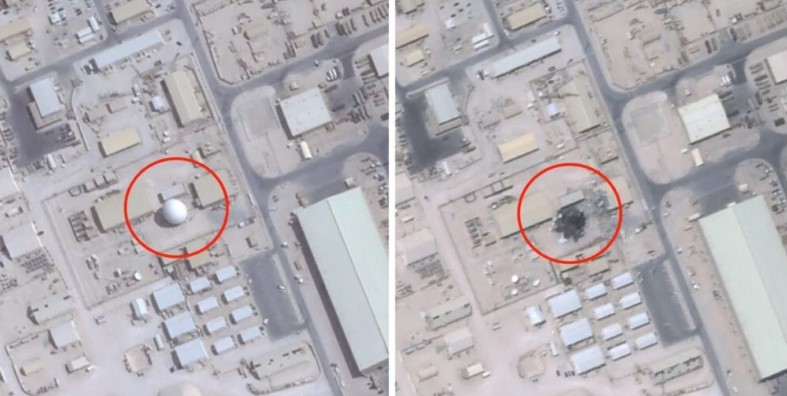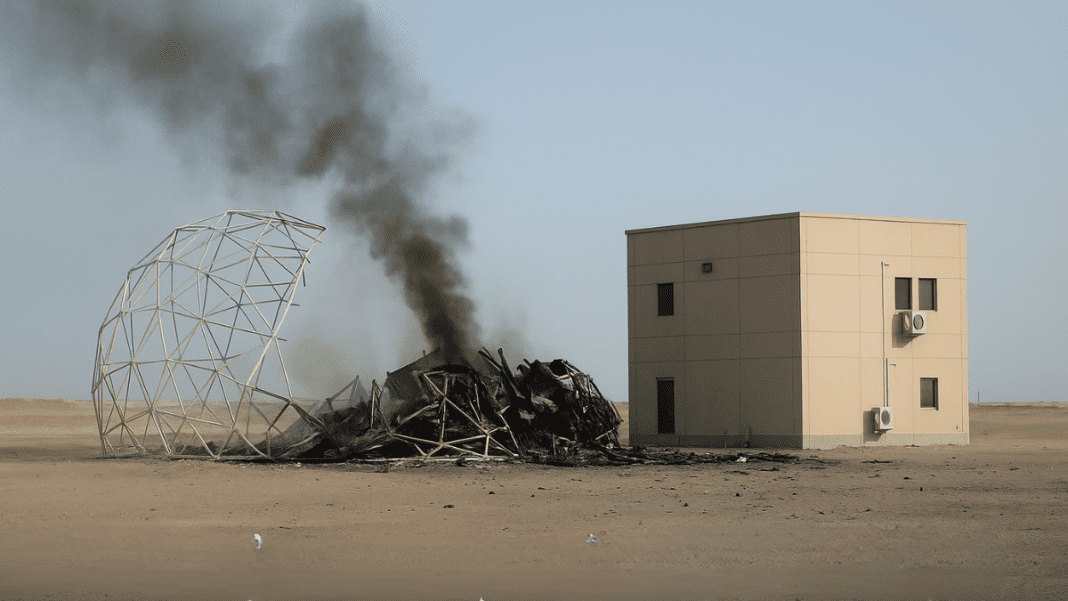In a significant development following recent tensions in the Middle East, the Pentagon has officially confirmed that an Iranian ballistic missile struck a major US air base in Qatar.
Pentagon Confirms Iranian Missile Strike on Key US Base
The confirmation came several days after Tehran claimed responsibility for the strike in response to earlier air raids on its nuclear facilities. The missile reportedly hit a geodesic dome at the Al Udeid Air Base, which houses essential equipment used for secure communications.
The Al Udeid Air Base, located just outside of Doha, the capital city of Qatar, is one of the largest US military bases in the region. It serves as the forward headquarters for the US military’s Central Command. The missile strike took place on June 23 during a 12-day military conflict between Iran and Israel.
According to the Pentagon, the missile attack did not result in any major disruption. The official statement described the damage as “minimal,” specifically affecting some structures and equipment on the base. Satellite images from before and after the attack suggest that a geodesic dome was destroyed. However, other critical areas appeared largely untouched.
Did Trump’s B-2 Bombing Pushed Iran to Block Hormuz and Paralyze Europe?
Despite the strike, US operations at the base remain fully functional. The Pentagon emphasized that the base continues to carry out its mission in partnership with Qatari forces. This includes providing regional stability and ongoing military support in the Middle East.
Satellite Images Show Targeted Damage
Visual evidence supports Iran’s claims and the Pentagon’s statement. Satellite images provided by a private company showed that the base was intact on the morning of June 23. The geodesic dome, a large white structure visible in earlier images, was shown to be missing in photos taken just two days later on June 25.
This dome was believed to house secure communication systems critical to American operations in the region. Though the structure itself was destroyed, nearby buildings sustained only minor damage. This indicates that the missile may have been aimed at specific targets without causing widespread destruction.

It is also important to note that all aircraft stationed at the base had been moved out before the attack. This precaution likely prevented greater damage and potential loss of life. The decision to relocate military assets may have been based on prior intelligence, helping reduce the impact of the missile strike.
Qatar’s air defense systems also played a role in reducing the threat. Reports suggest that several incoming missiles were intercepted, limiting the overall damage to the base. These defenses may have been activated in time due to advanced warning systems, although exact details remain undisclosed.
Iran Keeps Focus on Nuclear Program and Sanctions in US Talks
Iran-Israel Ceasefire Followed the Missile Attack
The missile strike occurred in the final hours of a brief but intense conflict between Iran and Israel. The war lasted 12 days and involved various military actions on both sides. Soon after the attack on the US air base, a ceasefire agreement was reached between the two countries.
The ceasefire was announced shortly after the June 23 missile strike, ending the immediate hostilities between the two nations. During the conflict, the US maintained a defensive stance, focusing on protecting its assets and personnel in the region.
Ukraine Issues Fiery Endorsement of US Strikes on Iran — Demands Same Force Against Russia
The Al Udeid Air Base is home to thousands of US military personnel and is a key strategic location in the Gulf. Any attack on this base is seen as a serious development, given its importance to military operations in the Middle East.
While the physical damage from the missile strike was limited, the incident underscores the risks that continue to affect regional security. It also highlights the vulnerability of key military infrastructure during periods of high tension in the Gulf region.

